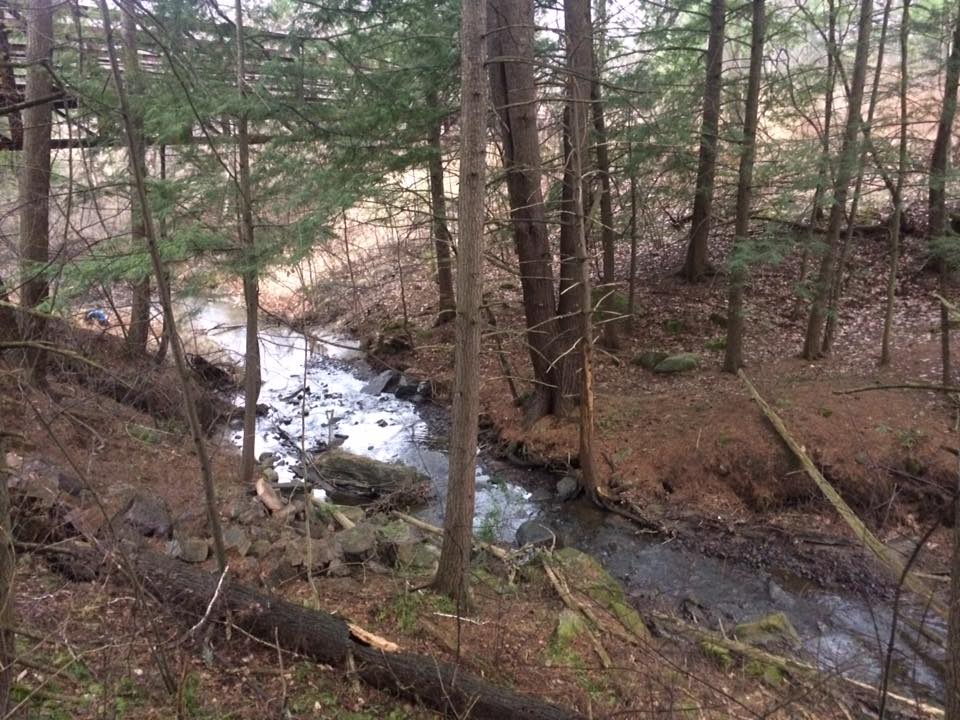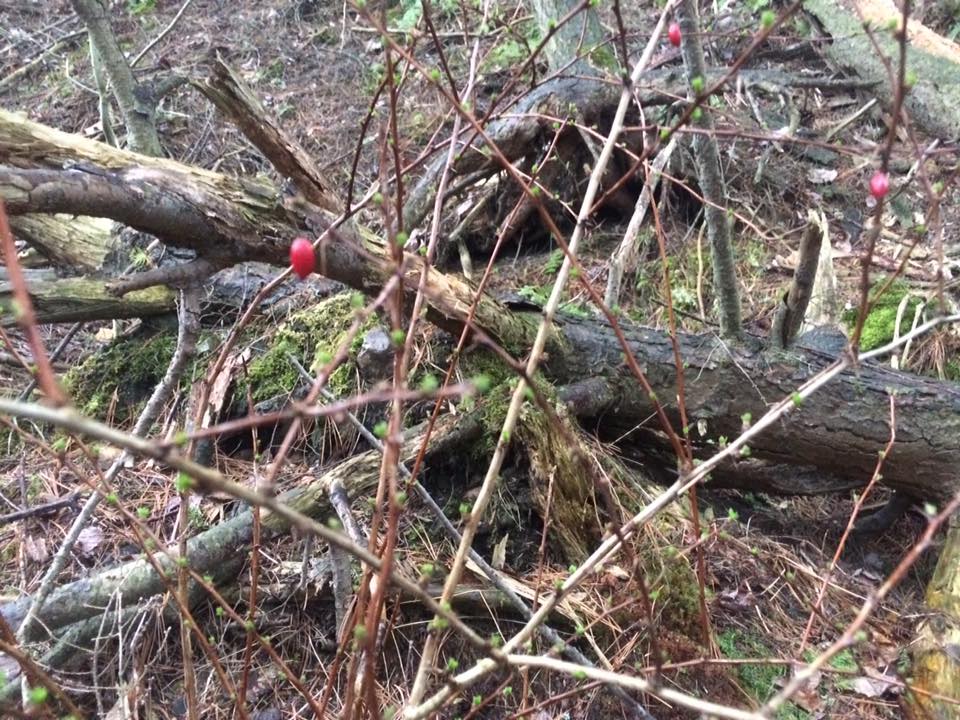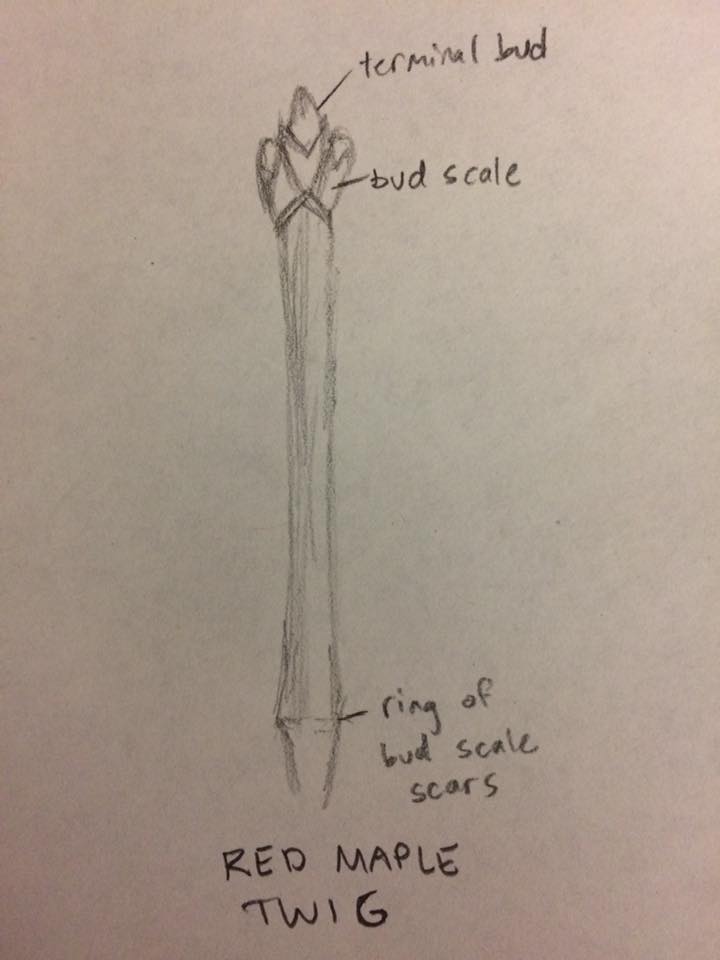The tracking shot I’ve used in my past posts, the most “springy” it’s ever been. (McHale, 2017)
Visiting my site this week was probably the first week it has really felt as if spring as sprung. The signs were all there: I didn’t have to wear 3 layers of clothing and a buff on my ride over to the site, there was absolutely no sign of snow, and the plants with buds were beginning to flower.

A nice overview of my site. (McHale, 2017)
Unfortunately, I saw no signs of amphibians at my site. I did however, hear a chickadee, and I saw an American Robin zoom through site near its edge at the recreation path. I also saw no wildflowers. I know from my site visitations in September that there is a sizable patch of jewelweed that grows along the stream, however, I had seen no sign of it regenerating yet.

Some invasive barberry was first beginning to show its berries. (McHale, 2017)
Since my site is practically all Eastern Hemlocks, there is a real lack of flowering plants. However, the well established barberry and glossy buckthorn plants were beginning to flower. The barberry on the site showed its berries, and the buckthorn’s buds were beginning to expand. I also spotted a red maple bordering the recreation path with expanding buds as well.

My sketch of the red maple bud I saw (McHale, 2017)
Looking at my site with a landscape ecology perspective, I would definitely would not call it interior forest. There are plenty of nearby edges surrounding my site. To the south, is I-189 and the pedestrian path. To its west is a set of electrical lines. To its north is a medium sized suburb. To its east, the hemlock forest does continue another 100 yards or so, but then it runs into the field surrounding the Aiken Research center on Spear Street. Nearby East Woods would likely provide better interior forest habitat than my site. However, BioFinder did identify my site to be part of an important wildlife corridor. While I-189 probably prevents any significant movement of species from East Woods to my site, the continuing stretch of hemlock forest that follows the stream northeastwards has the potential to provide a valuable water source for a variety of wildlife, including large mammals.

Edges surround my site closely, including this suburb to its north. (McHale, 2017)
